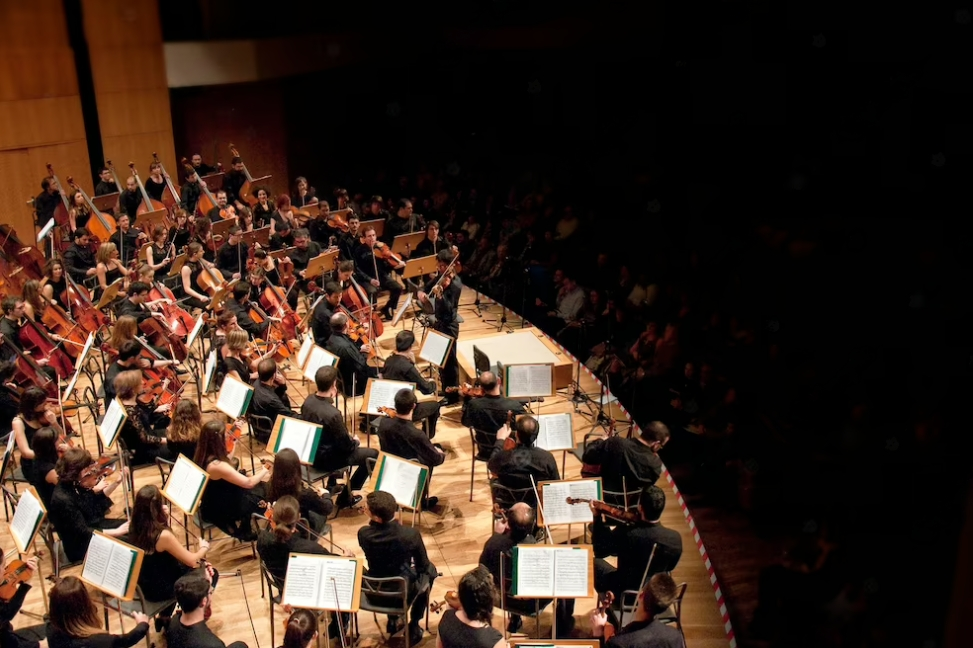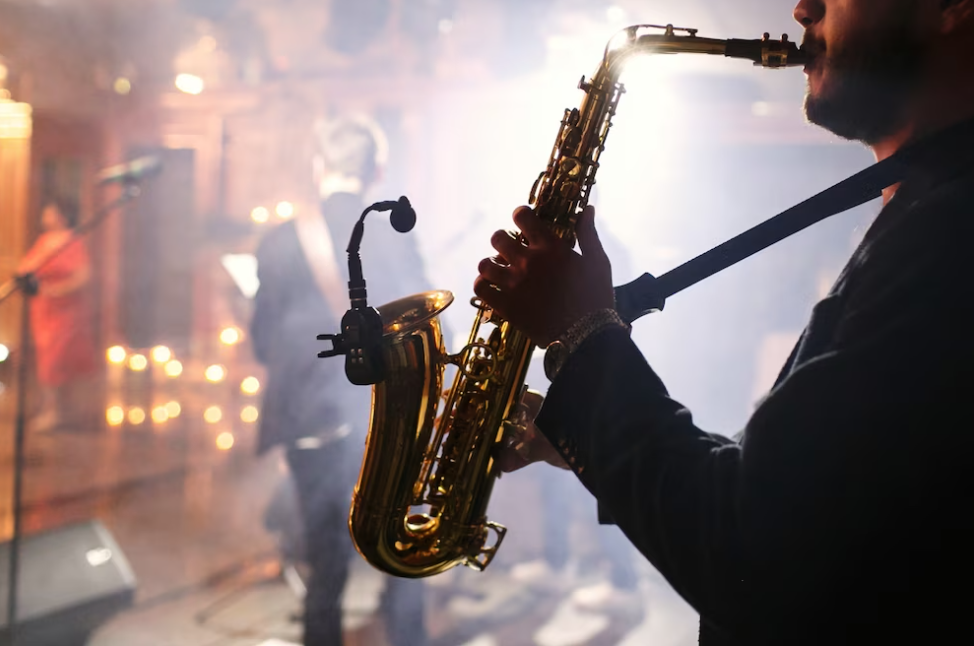Vocal music is a captivating art form that revolves around the human voice as the primary instrument. It is an expressive medium that communicates emotions, stories, and ideas through the power of singing. Vocal music has been an integral part of human culture for centuries, spanning various genres and styles that captivate audiences worldwide.
What is Vocal Music?
Vocal music, at its core, centers on vocals as the heart of the composition. It encompasses a range of styles, from solo performances to duets and more complex arrangements. Typically, lead vocals carry the melody, accompanied by harmony vocals that complement and enrich the overall sound.
Harmony vocals often play a supportive role in the lead, enhancing the melodic journey. However, in some instances, they take on a distinctive character, harmonizing with the lead or even presenting an additional melody. Backup singers add depth and dimension to the composition, harmonizing with each other or singing in unison or octaves. In the captivating world of vocal music, every voice weaves a unique tapestry of emotion and connection.
Types of Vocal Music
Every day, people immerse themselves in the diverse world of vocal music, exploring a multitude of captivating genres that resonate with their hearts and souls. Here, we present five types that exemplify the fantastic scope of this art form:
Opera

- Opera music has taken the world by storm, captivating audiences on a scale comparable to rock and pop music’s popularity. Its roots trace back to 16th-century Italy when Jacopo Peri’s La Dafne set the stage for a revolutionary art form.
L’Euridice, composed in 1600 but not performed for nearly 170 years, marked the true birth of opera as we recognize it today. Throughout history, renowned composers like Mozart, Rossini, Verdi, Wagner, and Puccini have left an indelible mark on the genre.
Notable performers such as Placido Domingo, Luciano Pavarotti, and Beverly Sills have breathed life into operatic masterpieces. Originally a form of entertainment for nobility and royalty, opera retains elements of classical vocals and Italian musical tradition, even as it continues to thrive in modern times.
A Capella
- The history and essence of acapella music stretch back as far as the dawn of song itself. From ancient civilizations to the present day, acapella remains a prevalent and cherished form of musical expression, holding significance in social settings and the evolution of musical styles.
Its origin lies in the need to replicate songs using only the human voice, devoid of instrumental or technological assistance. Over time, acapella evolved into an art form in its own right, setting it apart from traditional Western music even in the modern era.
Early acapella emerged out of necessity; street performers, lacking access to instruments, ingeniously crafted music using their voices alone. This fostered a style centered on vocal skill rather than conventional music-making, leading to its continued popularity in certain musical traditions.
With no instrumentation to limit them, vocalists in acapella can unleash their creativity, showcasing remarkable vocal range and control. This captivating form of music stands as a testament to the timeless power of the human voice.
Pop and Contemporary Vocal Music
- Pop and contemporary vocal music have an enduring presence in the music industry. These genres feature solo artists or vocal groups that perform popular songs encompassing a wide range of themes, from love ballads to upbeat anthems.
The expressive vocals and catchy melodies in pop and contemporary music resonate with a broad audience, making it a global favorite.
Pop music, often synonymous with accessible, catchy, and commercial tunes, goes by various names like Top 40 or mainstream music. It encompasses any popular music form, be it rock, country, or hip-hop, that resonates with a mass audience.
From its roots in the 1950s to the present day, pop music has undergone a remarkable transformation. The 1960s marked a musical renaissance, with Motown artists like Stevie Wonder, Smokey Robinson, and Marvin Gaye hailing from Detroit and becoming legends in their own right.
The 1970s witnessed the rise of diverse genres like disco, punk, glam rock, heavy metal, and folk. The era was also marked by the legendary Jimi Hendrix, whose distortion-heavy style influenced generations of guitarists.
The 1980s defined pop music with a movement that Michael Jackson epitomized. New Wave and New Romanticism blended rock, funk, soul, and dance, creating a vibrant and upbeat sound that resonated worldwide. Pop music continues to evolve, embracing new styles and captivating audiences with its infectious melodies and universal appeal.
Jazz Vocal Music

- Jazz vocal music is a vibrant genre that combines improvisation, soulful expression, and rhythmic complexity. Jazz singers use their voices as instruments, scat singing and interpreting songs with personal flair. The genre’s history is rich with iconic vocalists who have shaped jazz’s unique sound and style.
Rooted in the early 20th century African-American communities, jazz vocal music emerged alongside instrumental jazz. It found its place in the vibrant atmosphere of nightclubs, bars, and speakeasies, becoming an essential part of the jazz culture.
The genre’s history is steeped in the legacies of iconic vocalists who have shaped jazz’s unique sound and style. Pioneers like Louis Armstrong, Ella Fitzgerald, Billie Holiday, and Sarah Vaughan are revered as jazz luminaries, each contributing their own distinct flair to the genre’s evolution.
As jazz vocal music evolved over the decades, it embraced various sub-genres, such as bebop, cool jazz, and modern jazz, further expanding its horizons and solidifying its place as a profound and diverse form of musical expression.
Modern jazz vocalists continue to carry the torch, infusing new life and creativity into the genre. From traditional standards to contemporary interpretations, jazz vocal music remains a beloved and cherished art form that continues to mesmerize audiences worldwide with its timeless allure.
Folk and Traditional Vocal Music
- Folk and traditional vocal music reflect the cultural heritage of different regions and communities.
These songs often carry historical significance, passed down through generations, telling stories of love, struggles, and triumphs. Folk music showcases the diversity of human expression through vocal harmonies and rhythmic patterns.
Gospel and Spiritual Music
- Gospel and spiritual music are deeply rooted in religious and African-American traditions.
These genres feature powerful and emotive vocals, often accompanied by choirs and uplifting instrumentation. Gospel music conveys messages of faith, hope, and spirituality, while spirituals historically served as a means of strength and endurance during times of oppression.
World Vocal Music
- World vocal music encompasses a vast array of styles from various cultures and regions around the globe.
From the melodic chants of Indian classical music to the rhythmic beauty of African vocal traditions, world vocal music celebrates the richness and diversity of human expression through song.
A Cappella Music
- The history and essence of acapella music date back to the very origins of song itself, transcending time and spanning civilizations. From ancient times to the modern-day, acapella has remained a prevalent and cherished form of musical expression, finding its significance in social settings and influencing the evolution of musical styles.
Born out of the need to replicate songs using only the human voice, acapella stands as a testament to the raw power and versatility of vocal performance, devoid of instrumental accompaniment or modern technology. As time passed, it evolved into an art form in its own right, distinctively setting it apart from traditional Western music even in the present era.
Early acapella emerged out of necessity, where street performers lacked access to instruments, compelling them to discover ingenious ways to create music solely with their voices. This organic birth gave rise to a style that prioritized vocal skill over conventional music-making, leading to its enduring popularity in certain musical traditions.
Acapella’s allure lies in the boundless creativity it offers vocalists, free from the constraints of instrumentation. This artistic freedom empowers vocalists to display remarkable vocal range, control, and expressive prowess. With every performance, acapella music weaves an enchanting tapestry of harmonies, rhythms, and emotions, resonating with audiences across the ages and continuing to inspire new generations of musicians.
Beatboxing
- If you’ve witnessed beatboxing, you’ve witnessed vocal music at its finest. Beatboxers astound with their mouth, lips, tongue, voice, and body, creating captivating music and sound effects. Solo beatboxers showcase their skill, but groups of multiple beatboxers form awe-inspiring ensembles.
Originally a part of hip-hop in the 1980s, beatboxing has now spread to diverse genres like pop, rock, R&B, jazz, techno, and reggae. Its influence reaches beyond music, gracing film scores and video game soundtracks. What began with simple mouth-produced beats has evolved into full-fledged tracks. Beatboxers now blend electronic instrument sounds with their voices, resulting in a kaleidoscope of music. Today, thousands of recognized beatboxers collaborate, crafting a wide range of sonic marvels.
Conclusion
Vocal music, in all its diverse forms, serves as a powerful means of connecting with our emotions, sharing stories, and uniting people across cultures and generations. Whether performed on grand stages or within the intimate confines of our homes, vocal music continues to be a cherished art form that touches hearts and souls worldwide.